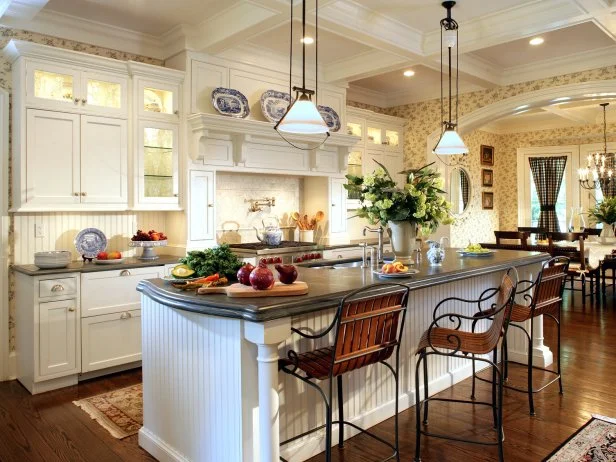Vital Elements to Consider When Selecting Legs For Cooking Area Island
Picking the proper legs for a kitchen area island involves a careful analysis of several elements that can significantly affect both performance and aesthetic allure. Amongst these, the option of product plays an essential function in ensuring durability, while the layout should complement the existing style. Factors to consider such as height and weight assistance are important for security and comfort. As we discover these aspects, it becomes clear that each choice can have far-reaching ramifications for the overall kitchen area experience. What nuances should be thought about in each of these groups to achieve the excellent balance?
Product Options
When selecting legs for a kitchen area island, recognizing the various material choices is vital for attaining both aesthetic appeal and structural honesty (Legs For Kitchen Island). The selection of material substantially affects not just the resilience of the island however likewise its total layout and functionality
Metal legs, frequently made from stainless steel or wrought iron, contribute a commercial and contemporary feeling while making sure sturdiness and stability. These materials are resistant to put on and can sustain considerable weight, making them perfect for larger islands.
Another alternative is crafted materials, like MDF or plywood, which can be much more affordable while still offering a series of coatings. Nevertheless, they may not provide the very same degree of stability as solid timber or metal. Last but not least, materials such as acrylic or glass can create a modern look, though they might call for extra assistance to make sure stability.
Ultimately, the choice of material for cooking area island legs ought to align with the preferred functionality and the total theme of the cooking area.
Style and Layout

When taking into consideration design, the form and coating of the legs are critical. Conical legs can provide a feeling of agility and style, while thicker, extra durable legs can share toughness and security. Furthermore, the surface-- be it painted, stained, or natural-- should enhance the kitchen cabinetry and kitchen counter products to produce a unified look.
Furthermore, the design of the legs can additionally mirror individual taste. Customized or decorative legs, such as those including detailed makings or distinct geometric shapes, can offer as focal factors, adding character and individuality to the kitchen area. Eventually, the right selection will certainly not only enhance capability however also boost the visual appeal, making the cooking area island a standout attribute of the home.
Height Factors To Consider
Choosing the proper height for kitchen area island legs is important, as it straight impacts both performance and convenience. The conventional elevation for a kitchen island normally varies from 36 to 42 inches, aligning with typical kitchen counter heights.

It is additionally vital to make up individuals' preferences and elevations. Personalizing the elevation can make sure a comfortable experience for all household members, making the kitchen island a much more practical and enjoyable room.
Weight Support
Making certain appropriate weight assistance for kitchen area island legs is vital for both safety and security and performance. The cooking area island typically serves several purposes, including cooking, dining, and added storage, requiring Click Here a robust support framework. When selecting legs, it is vital to consider the general weight ability required based upon the island's planned use and the products that will certainly be placed on it.
The option of product for the legs plays a significant function in their weight-bearing capacities. Solid wood, steel, and heavy-duty composites normally give exceptional stamina contrasted to lighter materials. Additionally, the style of the legs-- whether they are right, tapered, or have a pedestal form-- can influence their capability to disperse weight properly across the structure.
Furthermore, the leg positioning need to be strategically planned to improve stability. Legs placed at check the edges or with a bigger base can much better support heavier loads. Always seek advice from the supplier's requirements regarding load limits to guarantee that the legs can sustain the designated weight without jeopardizing security. In recap, choosing cooking area island legs with ample weight assistance is crucial for developing a useful and secure cooking room.
Installation and Maintenance
Correct installment and maintenance of kitchen area island legs are vital for ensuring long life and stability. This usually includes safeguarding the legs to the island base utilizing ideal bolts, guaranteeing that the legs are degree and aligned.
When installed, routine upkeep is required to maintain the integrity and appearance of the legs - Legs For Kitchen Island. For wood legs, periodic cleansing with a wet cloth and application of appropriate timber polish can stop dampness damage and preserve their coating. Metal legs may call for a gentle cleaning option to get rid of grease and gunk, adhered to by a dry cloth to stop corrosion formation
Furthermore, evaluate the legs routinely for indications of wear or damage, such as fractures or loose joints. Tightening up screws or screws as required can likewise lengthen the life-span of the legs. By sticking to these installment and upkeep techniques, homeowners Click This Link can ensure that their kitchen island remains sturdy and visually appealing for years to come.
Conclusion

Visual coherence is critical in choosing the design and layout of legs for a cooking area island, as these elements significantly influence the general setting of the room. Conical legs can provide a sense of lightness and beauty, while thicker, much more robust legs can communicate stamina and security.Picking the appropriate height for cooking area island legs is critical, as it directly impacts both functionality and comfort. In summary, selecting kitchen island legs with adequate weight support is essential for creating a safe and functional cooking room.
In verdict, choosing legs for a kitchen area island requires cautious consideration of various factors, consisting of product choices, style, height, weight assistance, and installment.